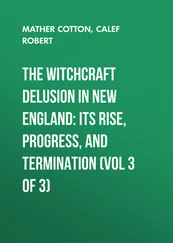This book takes the reader past superficial rhetoric for a straightforward discussion of “fiscal policy” – public spending, taxation, the balance between the two (“surpluses” and “deficits”), and the concrete function of all three. Reading this book requires no economic knowledge. I taught economics for over forty years, spending as much time dispelling the misleading conventional wisdom of the profession as I did presenting how economies actually work.
My commitment to non-technical language might appropriately begin with a bit on “jargon-busting” on budget language. The word “fiscal” has its origin in the Latin word fiscus , meaning a bag, basket or purse for holding money. The word came to mean the Roman state treasury. Thus, “fiscal policy” has a simple meaning: management of the public purse.
With jargon banished, readers following my explanations require only the commitment to think logically and to link logic to what we observe, attributes common to all citizens. There is no mathematics here, and the arithmetic hardly goes beyond adding and subtracting. A problem we repeatedly face is that the words used in debates over public spending and taxation take on so much ideological baggage that they represent barriers to understanding. Foremost among these are “deficit” and “debt,” whose meanings, measurement and policy significance are distorted by mutually reinforcing misrepresentations.
In Dutch and German the word for “debt” also means “guilt,” which provides insight into the decades-old austerity policies of the German Ministry of Finance, as well as the deficit and debt rules in the treaties of the European Union. In English, “debt” and “guilt” are different words. Nonetheless, many English-speaking politicians, not least the former UK Chancellor George Osborne and former Republican Congressman Paul Ryan, use the former to imply a heavy dose of the latter. In some cases the transubstantiation of meaning brings memories of “Newspeak” in George Orwell’s 1984 . A clear example is the use of the benign “savings” for the malign “cuts in public services” and the pejorative “black hole” for the neutral “revenue shortfall.”
This book uses Citizenspeak rather than neo-Orwellian Newspeak to dispel rhetorical fallacies and lay the basis for informed public debate among knowledgeable citizens. This is a book by a citizen for other citizens aimed at demystifying public spending and taxation. To achieve that demystification we directly confront the myths that obscure understanding of what our government does. Foremost among these is the “living within our means” cliché (Myth 1), whose vagueness is its strength, allowing it to serve as an all-purpose justification for many fallacious arguments about public policy.
One of the most important messages spun off from “living within our means” is that governments should “balance their books” (Myth 2). The balancing metaphor is powerful and easily captures the mind, contrasting balance, a good thing, with imbalance and skewedness, which in the mind’s eye cry out for correction just as a picture hanging crookedly offends the eye and demands adjustment.
The conventional narrative applies this metaphor of balance to the public budget because of its alleged validity for households. What reasonable person would challenge that households should balance their accounts? If we do not, “we must tighten our belts” (Myth 3). It is a mystery how this parable, “households must balance their books, so government should also,” ever left the starting blocks, much less gained general acceptance. A bit of reflection and a few statistics lead unambiguously to quite a different parable.
Households do not “balance their books” as general practice. And when households spend more than their incomes they do not “tighten their belts” except when their circumstances are very dire. The making-ends-meet, balance-the-books, tighten-belts metaphors draw their legitimacy from the myth that debt is always bad (Myth 4). In Hamlet , the tediously pompous and much ridiculed Polonius encapsulates the debt myth when he tells his son, “Neither a borrower nor a lender be” (Act 1, scene 3). We find the modern Polonius manifested on a website named appropriately enough “The Balance” ( www.thebalance.com). There we read, “A little debt won’t hurt, will it?,” followed by the ominous warning “That’s how it starts,” leading to profligate degeneracy and the disintegration of families. That almost no households practice debt abhorrence should come as a surprise to few, yet the fear of debt persists as conventional wisdom.
Because we must live within our means (Myth 1) and our government must do the same (Myth 2), we and our government must tighten our belts (Myth 3) and stay out of debt (Myth 4) by reducing expenditure, not raising taxes (Myth 5). We string the five myths together and come to the super-conclusion: there is “no alternative to austerity” (Myth 6).
All five of the building blocks used to construct the necessity of fiscal austerity are false (each is a myth). When we replace the myths with logic and reality, we reach the opposite conclusion, that “there is always an alternative.” The closing chapter presents an alternative approach based on previous myth-busting. Reversing the rhetoric of the first myth, in the conclusion I show that, when we abandon the myths of austerity, our government can indeed “live within its means” while funding a just society. We have the means to foster hope over despair, infuse optimism in place of pessimism, imagine a brighter future and achieve it.
As noted, in almost every country economic policy is more about politics than economics, though policy makers frequently employ technical economic arguments when justifying their political predilections. The use of esoteric technical language to convey political messages is not confided to economics. We frequently find it in discussions of public transport, education and health services. Somewhat unique to the politics of economic policy is the use of “common-sense” parables to convey political messages as if they were self-evident. The necessity of national governments to cover expenditure with tax revenue frequently stars as the central message of these parables.
Parables and myths have a long and analytically undistinguished history. In developed countries their influence and frequency declined substantially in the first three decades after World War II. The Great Depression of the 1930s and the subsequent need for a major government role in war-time economies made the limitations of “budget-balancing” metaphors obvious. After the war, both in the United States and in Europe, progressive parties favored a larger role for government, including a substantial spending share, while conservative parties preferred a more restricted and smaller public sector. The political preference for a small public sector tended not to place primary justification in arguments based on the necessity to match public spending with public revenue.
When discussing austerity and public budgets in general, a look at concrete experiences proves helpful, including inspection of statistics. Because national statistical offices do not always collect the same information, or when they do they do not present it in the same manner, a pragmatic approach is required. Throughout this book the analysis seeks to make comparisons, marshalling statistics from various countries, chosen for relevance to the issue under inspection. Effort is made to compare like with like, and this frequently restricts which countries can be compared.
The practice of public budgeting, in contrast to the rhetoric, is shown in figures 0.1 and 0.2, first for the United States, followed by the United Kingdom. Over the seven decades 1950 to 2018, the US federal government accounts showed an overall deficit in sixty of the sixty-eight years. Consecutive years without deficits occurred only twice, in 1956–7, when Dwight Eisenhower served as president, and from 1998 to 2001, during the presidency of Bill Clinton. The average for the seven decades was minus 2.2 percent of national income (gross national product). In practice, neither Democrat nor Republican presidential administrations considered it a problem requiring immediate correction when spending exceeded tax revenue, though rhetoric might have been otherwise. Governments of US neighbor Canada have shown a greater tendency to surpluses, though far from half the time, in eleven of the fiftyseven years between 1960 and 2017 (all consecutive, 1998–2008).
Читать дальше












